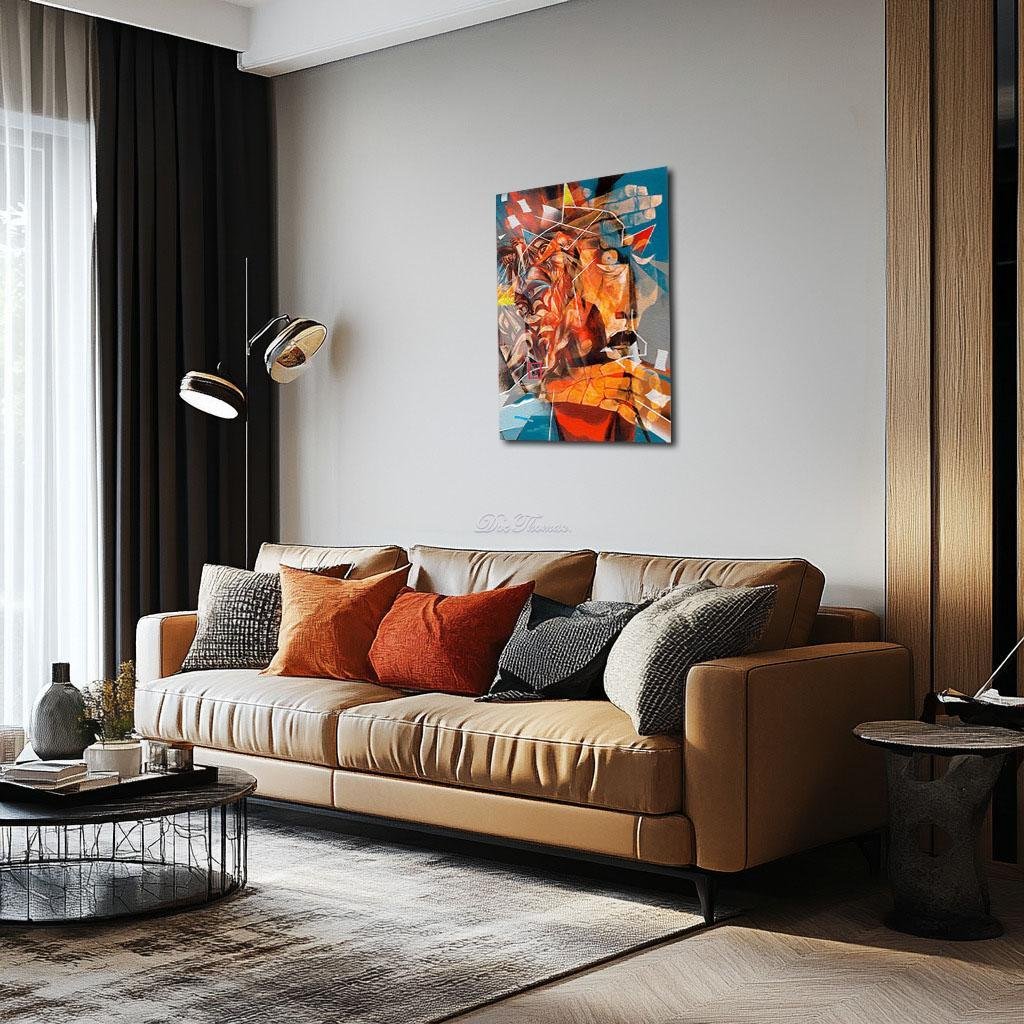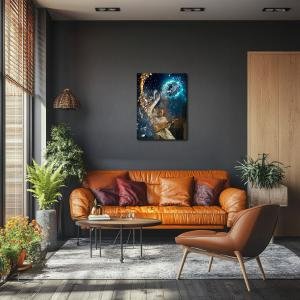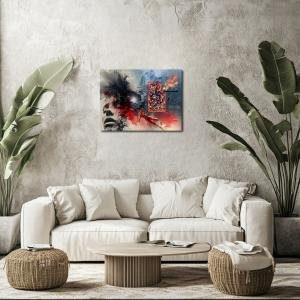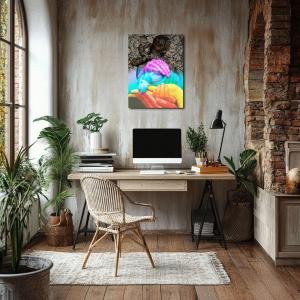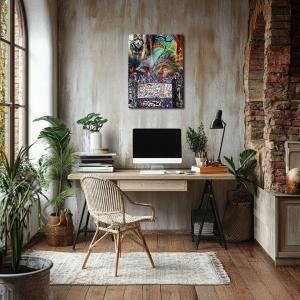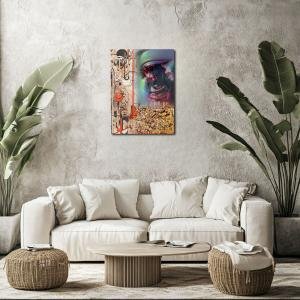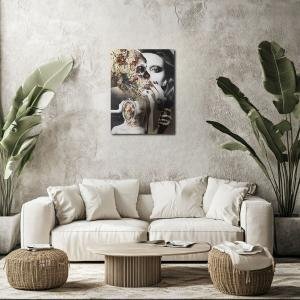Veins of Porcelain: The Geometry of the Wounded Hunter
Veins of Porcelain: The Geometry of the Wounded Hunter reimagines Pollock’s Untitled (Naked Man with Knife) as a fractured myth of fury and fragility. A twisting male figure, painted in molten reds and ochres, contorts within sharp geometric overlays, as if dissected by the gaze of abstraction. The knife, barely visible, becomes an extension of his disintegrating form. Cold white lines slice across the canvas like surgical incisions, attempting to contain his chaos. This is not a portrait of violence, but of the moment after—the echo of a scream trapped between raw instinct and modern dissection, frozen in the act of becoming legend.
Please see Below for Details…
Hotline Order:
Mon - Fri: 07AM - 06PM
404-872-4663
Veins of Porcelain: The Geometry of the Wounded Hunter reinterprets Jackson Pollock’s Untitled (Naked Man with Knife) as a fevered mythic convulsion—where violence, masculinity, and internal war erupt into fragmented geometry and molten anatomy. In this vision, the central figure is no longer simply a man holding a weapon but the embodiment of primal fragmentation: hunter and prey, flame and flesh, dismembered yet defiant within a shifting matrix of angular language.
The composition is an implosion of gesture and restraint—each stroke of Pollock’s expressionistic anatomy is overlaid with the clinical severity of sharp-edged, modernist white outlines. These slicing lines don’t just contain the figure—they interrogate him. The body twists inwards, fists clenched, limbs coiling like smoke around a burning core. One eye remains visible, ghostly blue and startled, watching from behind layers of visual wreckage as if bearing witness to his own deconstruction.
The knife itself is barely visible, almost abstracted—reduced to a flicker of steel and intention hidden among the swirling muscular chaos. This is not a scene of active violence but of its aftermath, the moment where the weapon is no longer an object but a continuation of the body. The man is his blade, and his flesh—fissured and melting in hues of burning copper and brick-red—pulses with the consequence of the fight.
Pollock’s gestural musclework has not been erased here; it has been overlit, dissected by foreign intrusions. Angular fragments of white and gray slice through the figure like psychological scans, turning emotion into diagram. These foreign geometries contrast starkly with the biological fluidity of the painted body, evoking a deeper conflict—an ancient instinct crashing against an imposed order.
Color becomes a battlefield of will. The base tones are infernal: deep vermilions, burnt orange, clay red, and blistered umber—all speaking to inflammation, rage, and wound. The flesh glows as if backlit by internal combustion. Pollock’s own linework spirals in darker tones—brown-black and iron-gray—like smoke choking its way through a furnace. Over this primal foundation, sudden flashes of cold: white shards, blue grids, pale gray veils. These insertions act as antiseptic attempts to contain or control what can’t be contained.
In the background, pale blues and cloudy whites open into illusionary space. A semblance of sky or void peeks from behind the chaos, but even that is interrupted—intersected by symbolic shapes that feel like collapsed architecture or broken sigils. These interruptions feel surgical and modern—like someone tried to preserve the violence as evidence, trapping Pollock’s rawest scream inside an abstract museum of memory.
As an artist, my thoughts in creating this image circled around the idea of violent self-definition. Pollock’s original work was not merely a figure study—it was a howl at the edge of abstraction, one of his last figurative gasps before surrendering to pure chaos. In this reinterpretation, I wanted to hold onto that human edge, that almost unbearable intimacy—the moment where the man can still be seen before he disappears into gesture.
The knife becomes the axis of agency. It is the will to fight, to carve meaning into a collapsing world. But that act is not triumphant—it is exhausting, ritualistic, perhaps futile. The white geometric overlays are the voices of reason, society, order, encasing him like a specimen even as he thrashes against them. He becomes myth—Orpheus torn apart not by beasts, but by thought itself.
Veins of Porcelain: The Geometry of the Wounded Hunter does not offer resolution. It is about the tension between rawness and containment, between the body and the systems that frame it. It asks not who the man is, but what remains of a person when their struggle is translated, abstracted, and archived.
Add your review
Your email address will not be published. Required fields are marked *
Please login to write review!
Looks like there are no reviews yet.

